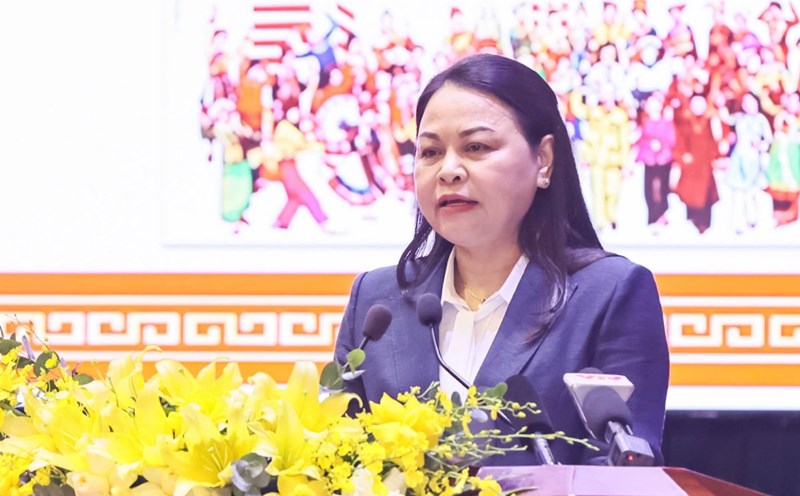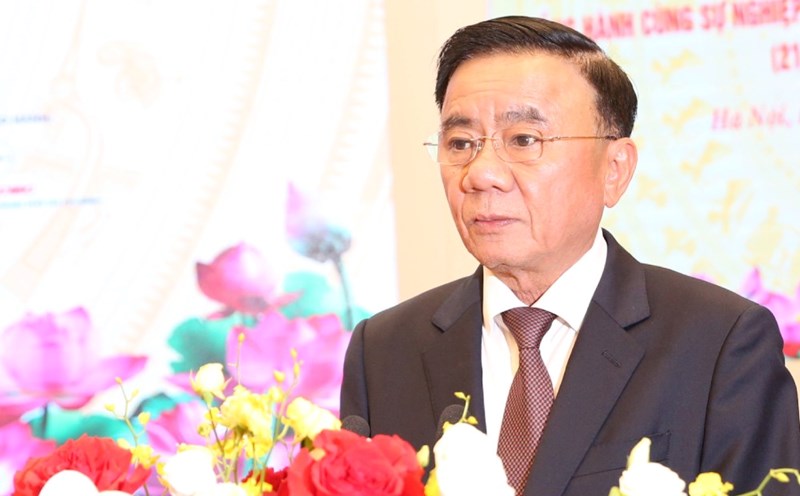On June 14, at the National Training Conference on the organization and operation of the Party organization, government, Fatherland Front (VFF), political organizations at the commune level (new), members of the Party Central Committee, Permanent Deputy Secretary of the VFF Party Committee, Central organizations, Vice President - General Secretary of the VFF Central Committee Nguyen Thi Thu Ha introduced the topic of the Organization and operation of the VFF, socio-political organizations (provincial and commune levels) according to the new model.
According to Vice Chairwoman - General Secretary of the Central Committee of the Vietnam Fatherland Front Nguyen Thi Thu Ha, for the provincial level, the Congress of the Vietnam Fatherland Front at the provincial level (5-year term), the election of the Vietnam Fatherland Front Committee at the provincial level, is expected to have about 90-120 members (representing typical organizations, classes, classes and individuals in the area). The Congress is held right after the Party Congress of each level.
Currently, the Directive on leadership of the Vietnam Fatherland Front Congress approved by the Central Party Secretariat has new points such as: The Directive on Congresses includes leaders of the Vietnam Fatherland Front Congress and Congresses of socio-political organizations. This demonstrates synchronization and consistency in leadership and direction.
The commune-level Congress is expected to be completed before October 31, 2025, and the provincial-level Congress before December 31, 2025. To ensure the term of the Provincial and Commune Front Congresses is 2025 - 2030, the Central level term is 2026 - 2031. The Vietnam Fatherland Front Committee of the province jointly elects the Standing Committee as the agency to lead, direct the implementation and organization of all activities of the Vietnam Fatherland Front at the provincial level (including 5 socio-political organizations).
Regarding the Standing Committee of the Vietnam Fatherland Front at the provincial and commune levels, there is a big difference compared to the current Standing Committee model. Regarding the structure of the Standing Committee, previously, the Standing Committee consisted of the Chairman, Vice Chairman and a number of Standing Committee members who are full-time staff working at the Front.
Currently, the Chairman, Permanent Vice Chairman and Heads of 5 socio-political organizations and Vice Chairmen are the leading agencies and are the agencies responsible to the Provincial/City Party Committee Standing Committee for all activities and under the direct and regular leadership of the Vietnam Fatherland Front Party Committee and provincial/city-level unions.
The next difference is the Provincial Vietnam Fatherland Front Committee, the Standing Committee is the agency that leads and directs all activities of the Vietnam Fatherland Front (including 5 socio-political organizations). The Standing Committees at the provincial and commune levels are units that coordinate work with provincial and commune-level agencies and departments. In the immediate future, the current number will remain the same, including the heads of 5 socio-political organizations (elected after the merger) and the Vice Presidents of the Vietnam Fatherland Front at the provincial level before the merger. After 5 years, the number will be according to regulations.
The Standing Committee of the Vietnam Fatherland Front Committee at the provincial level (from 7 to 9 people), in the immediate future, due to the merger, will keep the number of vice chairmen of the provinces the same, including the Vice Chairmen of the provinces before the arrangement - then 7 to 9 people.
The advisory committees to assist the Vietnam Fatherland Front Committee at the provincial level will have 1-2 specific committees/budget units decided by the Provincial Party Committee Standing Committee. This is a new feature in the spirit of flexible decentralization to suit the requirements of practice.











